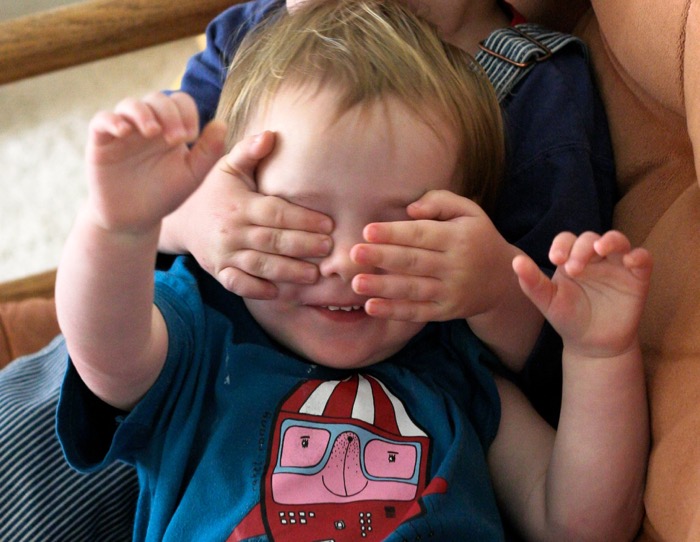
Rigorous, robust and searching journalism will inevitably offend parts of the audience. This is particularly true with global broadcasters who aim to reflect world affairs as they are, and in doing so cover all aspects of human experience.
Journalists must ensure that the material they use in coverage has a clear editorial purpose. Where that material is likely to offend, there need to be clear warnings of what is coming up.
When offence silences news
However, journalists need to be careful that offence is not used to prevent them from digging for news. Just because someone is offended doesn’t mean that the topic should not be investigated.
Television can observe a watershed – this is a time set when children are expected to be in bed and material which is more graphic and possibly shocking and offensive can be broadcast – in some countries that is set at 9pm. However, many broadcasters have catch-up services, and content may easily be watched at any time via a suitably equipped TV.
This means that anything age-inappropriate should be labelled as such, and the same goes for online platforms, where content may be viewed at any time of the day around the world.
Violence
The vulnerable, especially children, can be upset by the portrayal of violence, whether real or fictional. Such content must be clearly labelled. However, we must not shirk from reporting about and showing the full impact of a story where real life violence, or its aftermath, is an integral part. In such cases we need to strike a balance between the demands of accuracy and the dangers of causing distress. Editorial judgement needs to be used in the following cases:
- violence in places normally regarded as safe, such as the family home, hospitals and schools
- unusual or sadistic methods of inflicting pain, injury or death
- incidents where women and children are the victims
- violence without showing the effect on the victim or the consequences for the perpetrator
- sexual violence
- suicide, attempted suicide or self-harm.
We should never be seen to condone or glamourise violence or antisocial behaviour.
Sex
Journalists have a responsibility to ensure that all material exploring sexual issues is treated sensitively and is editorially justified. This could include publishing links to relevant websites or the phone numbers of authoritative helplines. However we need always to be aware of who is running the helplines and whether they are genuine organisations or not.
Language
Judgements about the use of offensive language must be taken regarding the tone and context of the output. Different words cause different degrees of offence in different parts of the world. Language that causes most offence includes:
- sexual swear words
- terms of racist abuse
- terms of sexual and sexist abuse or abuse referring to sexuality
- pejorative terms relating to illness or disabilities
- casual or derogatory use of names considered holy by some
- the use of religious words in combination with other offensive language.
Religion and politics
Some will try to limit freedom of expression, and in turn media freedom, by claiming that a journalistic investigation offends their religious beliefs. Here, a clear line needs to be drawn.
You can offend what people are such as their size, race, sexual preference etc, because that is what the person is, but it is harder to justify having caused offence when it relates to what people think, such as their beliefs, political persuasions etc.
In all cases, be careful not to be too ready to give up the precious and hard-fought fundamentals of media freedom just because it upsets someone’s religious or political beliefs.
Portrayal
A media organisation should aim to reflect the needs, concerns and issues affecting all the people and cultures in its audience.
There will be times when the material we publish or broadcast will reflect the prejudices and disadvantages that exist in society, however journalists must not be seen to perpetuate any injustice.
In all cases they should avoid offensive or stereotypical assumptions. People should not be labelled in terms of a disability or sexual orientation unless it is editorially justified – for example, the information is part of the story.
Alcohol, smoking and drugs
It is never editorially justified to encourage, glamourise or condone the use of illegal substances.
Journalists need to take particular care when the item is likely to be seen by children. We also need to make sure that all the legal and social aspects of the issue are made clear.
Suicide and self-harm
Suicide, attempted suicide and self-harm should be portrayed with great sensitivity.
Care must be taken to avoid describing or showing methods in any great detail. The term “commit suicide” is considered offensive by some people. Some prefer the terms “took his own life” or “killed herself”. Again, we need to be careful that the vulnerable, particularly children, are not influenced.
Tragic events
Coverage of the aftermath of a tragic event such as the anniversaries of rail crashes, bomb blasts or child abductions need considerable sensitivity.
We need to balance the news justification with the likely personal suffering of survivors and relatives of victims.
Children
Children and young people need help making sense of the world in which they live. The challenge for journalists and programme makers is to ensure that they inform without leading or corrupting. Output aimed at the young needs to be challenging, educative, enjoyable and interesting.

Questions
- What is the primary role of journalists?
- How should journalists handle material that might offend the audience?
- Why is it important for journalists to continue investigating topics even if they might offend some people?
- What is the significance of the “watershed” in television broadcasting?
- How should violence be portrayed in journalism, especially when it involves vulnerable groups?
- What considerations should journalists make when reporting on sexual issues?
- How does the text suggest journalists should approach the use of offensive language?
- What challenges do journalists face when reporting on religion and politics?
- How should media organisations address the portrayal of people with disabilities or different sexual orientations?
- What are the guidelines for reporting on suicide and self-harm?
Answers
- The primary role of journalists is to provide rigorous, robust, and searching journalism that reflects world affairs and covers all aspects of human experience.
- Journalists should ensure that offensive material has a clear editorial purpose and provide warnings when necessary.
- It is important because offence should not be used to silence news or prevent journalists from investigating important topics.
- The “watershed” is a time when children are expected to be in bed, allowing more graphic content to be broadcast, typically set at 9pm in some countries.
- Violence should be portrayed with a balance between accuracy and the potential to cause distress, especially when it involves vulnerable groups like children and women.
- Journalists should treat sexual issues sensitively and ensure that the material is editorially justified, providing links to genuine helplines if necessary.
- Offensive language should be judged based on the tone and context, considering the varying degrees of offence in different parts of the world.
- Journalists face challenges in maintaining media freedom while respecting religious and political beliefs, ensuring not to easily give up on fundamental freedoms.
- Media organisations should avoid offensive or stereotypical assumptions and only label people in terms of disability or sexual orientation if it is editorially justified.
- Reporting on suicide and self-harm should be done with great sensitivity, avoiding detailed descriptions of methods and considering the impact on vulnerable audiences.
Lesson plan for trainers
If you are a trainer of journalists we have a free lesson plan: Offence and journalism which you are welcome to download and adapt for your own purposes.









